Lar a journey through time and culture
Lar: a journey through time and culture
Lar is a city where history whispers through its traditional bazaars, centuries-old caravanserais, mosques, ancient ramparts, bizarre-shaped cisterns, and above all, the warm hospitality of its residents. The city’s amalgam of new and old constructions creates a unique rhythm that makes every corner worth discovering.
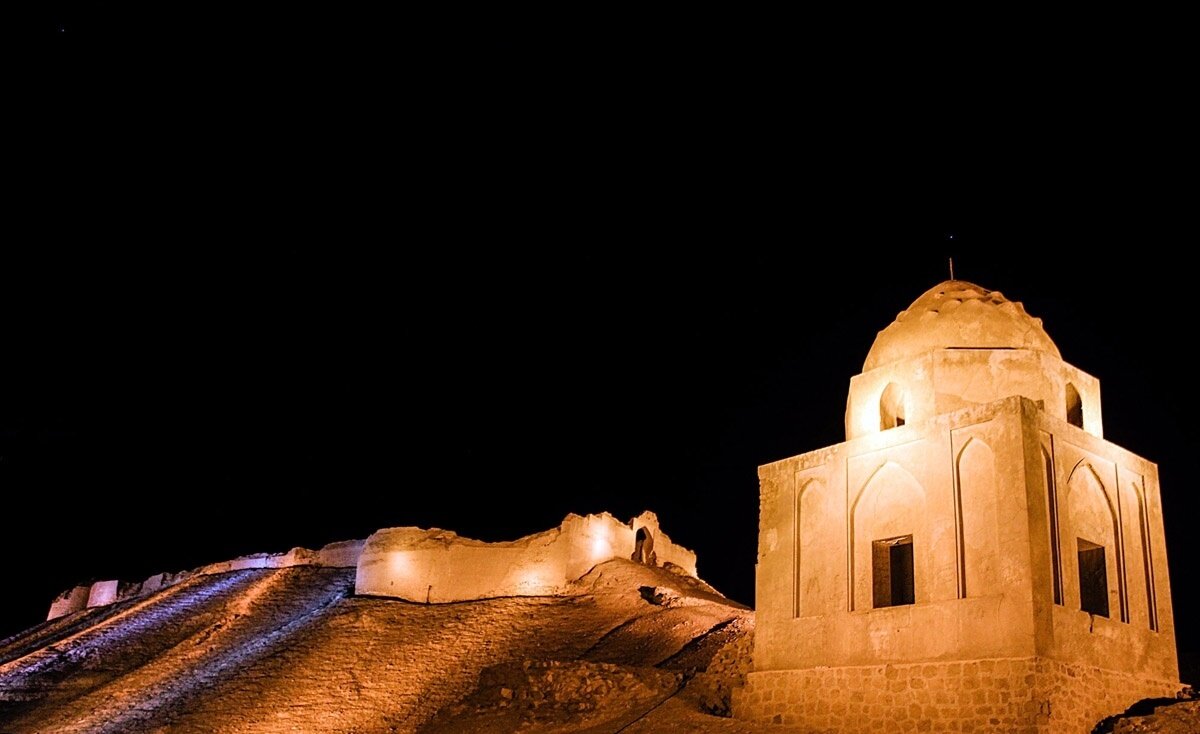
It was a crisp November morning when I arrived in Lar, a semi-arid city in southern Iran, where ancient charm seamlessly blends with modern life, inviting avid sightseers to explore its wonders.
For me, initial impressions of Lar came through narratives, guidebooks, travelogues, pictures, and video clips. But stepping into its streets, meeting its people, and witnessing cultural treasures firsthand turned those distant imaginings into a vivid and unforgettable reality.
During a three-day stay, I, along with several media personnel and local guides, explored Lar’s cultural, historical, and natural landmarks.
From the lively Bazaar of Qeysarie and the dramatic Dragon’s Body Fortress to the ingenuity of Halva Masghati artisans and the charm of the old quarter, it proved to be a city of surprises and stories waiting to be uncovered. Here are glimpses of the journey that left an indelible mark on my heart.
Day 1: Arrival and initial discoveries
Our excursion began around 9 a.m. With little time to waste, we ventured into Lar’s historical heart.
The first stops included a traditional workshop for Halva Masghati production, the iconic Bazaar of Qeysarie, Masjed-e Ru-ye Ab (“On-Water Mosque”), and two ancient caravanserais. These landmarks, situated in close proximity, revolved around the bustling bazaar.
The Bazaar of Qeysarie was a marvel of historical and architectural significance. Its grand domed centerpiece, adorned with inscriptions attributed to Shah Abbas Safavi from the 17th century, hinted at its rich history, tracing back to the early Islamic period. Built from stone instead of brick, the bazaar stood as a testament to local craftsmanship.
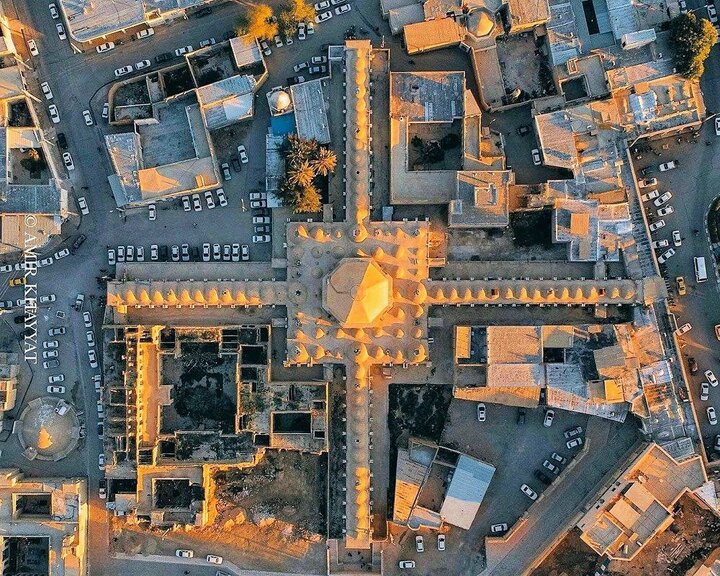
An aerial view of the ancient Bazaar of Qeysarie
The vibrant stalls offered colorful spices, medicinal herbs, traditional attire, and intricate handicrafts, to name a few. This lively marketplace wasn’t just a relic; it remained a thriving hub for trade, drawing shoppers from nearby towns.
Adjacent to the bazaar, we discovered Tavakol’s Workshop, a family-run establishment crafting the renowned Halva Masghati. This gelatinous sweet, a signature souvenir of Lar, is exported worldwide, from the Persian Gulf states to parts of Europe. Through the owner’s hospitality, we tasted almost all kinds of their products and marveled at the century-old recipes and the artistry of the local craftsmen.
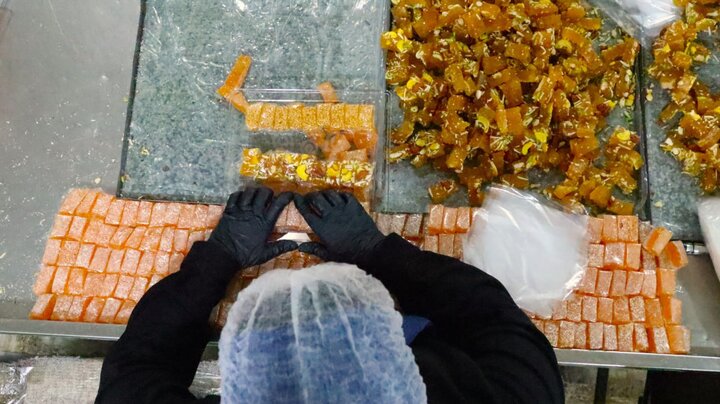
A worker arranges Masghati pieces at a traditional workshop
In the afternoon, we hiked to Qal’eh-ye Azhdaha Peykar (“Dragon’s Body Fortress”). Perched atop a hill, the fortress dates back to the Sasanian era, as evidenced by archaeological findings. Though lacking full restoration, its formidable walls and the adjacent domed structure, said to honor Nader Shah Afshar’s mother, were captivating. The absence of lighting on its rugged exteriors highlighted the need for further preservation.
The next stop was a Husayniyya and museum dedicated to the late Ayatollah Ayatollahi who was the Friday Prayer Imam of Lar.
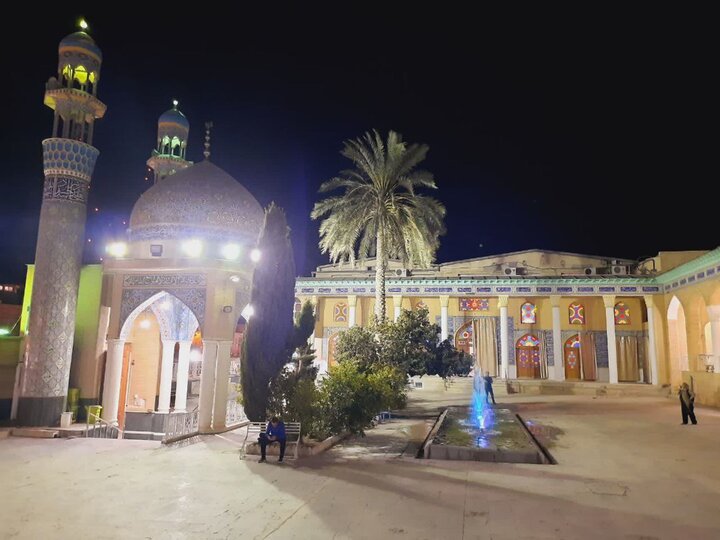
The Husayniyya and museum of the late Ayatollah Ayatollahi
Our final stop was the newly established observatory atop a hill. The facility, designed to minimize light pollution, underscored Lar’s longstanding tradition in astronomy. As the day ended, we gazed at the stars, reflecting on the city’s deep connection to science and history.
Day 2: A deeper dive into culture and nature
The second day commenced with a visit to a larger Halva Masghati factory. Unlike the previous day’s workshop, this facility combined traditional recipes with innovative packaging, providing employment opportunities for local women. Their precision and dedication shone as they shared their stories, embodying the pride Lar takes in its heritage.
Next, we visited the home-turned-museum of Mojtaba Shahrashoub, a passionate collector of Lar’s historical artifacts. His private collection ranged from 500-year-old Lari coins to Qajar-era garments and Pahlavi-era metalworks. This intimate museum was a treasure trove of Lar’s cultural legacy.
Our journey continued to Hormud, about 40 kilometers east of Lar. This region is home to the world’s smallest ram species, the Laristani mouflon, or “miniature ram.” Native to this arid landscape, these rams weigh around 40 kilograms, with horns no longer than 75 centimeters. Witnessing these rare creatures in their natural habitat was a once-in-a-lifetime experience.
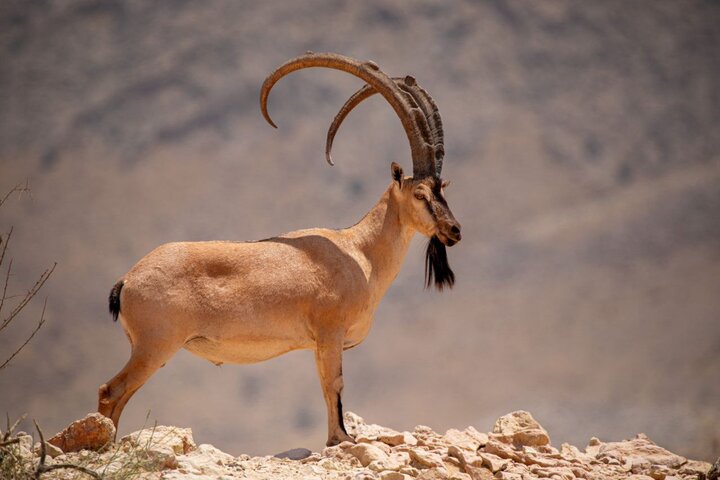
A typical Laristani mouflon or “miniature ram” of Larestan
In the late afternoon, we explored Baq-e-Neshat, a Safavid-era garden housing a historic mansion. This structure, once Lar’s administrative center, showcased the elegance of Persian architecture. In the courtyard, local women baked traditional bread, sharing their culinary art with us, which added a warm and authentic touch to the visit.
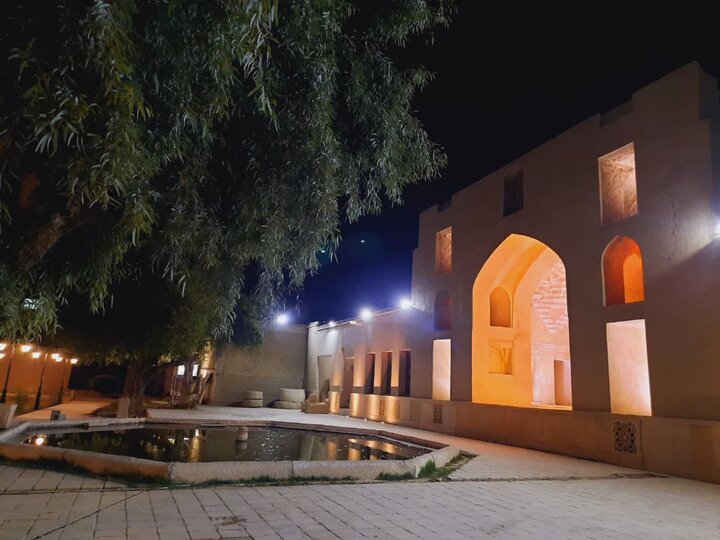
Neshat Garden with its Safavid-era mansion
Day 3: Echoes of the past
Our final day’s excursion began in Karmostaj, a village 30 kilometers southeast of Lar. Nestled among mountains, this village is renowned for its water reservoirs or “Berke” as called by the locals.
These domed structures, built below ground level, collect and store rainwater, sustaining the community in this arid region. Despite the lack of piped water, these reservoirs highlight the ingenuity and resilience of Lar’s people.
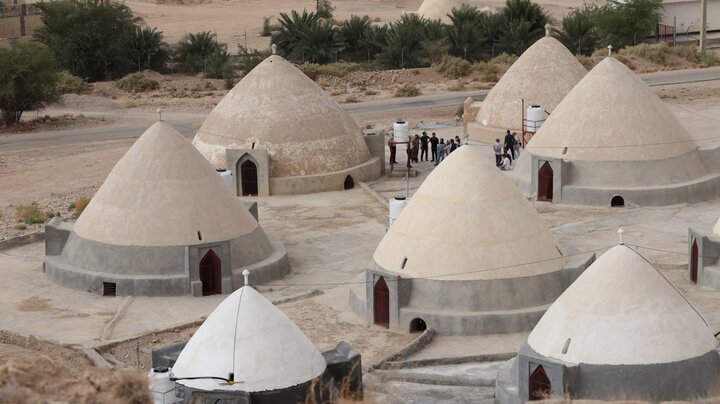
Situated 30 kilometers southeast of Lar, Karmostaj village is famed for its water reservoirs
Returning to Lar, we explored the city’s old quarter, guided by a local expert. Amidst the remnants of centuries-old homes and courtyards with wooden doors and central pools, we felt the essence of traditional Persian life. However, the scars of time and earthquakes were evident, as much of the old fabric had been replaced by modern constructions.
Our final stop was a quaint pottery workshop. Operated by a single artisan, this modest space was brimming with creativity. Watching him mold clay into beautiful vessels was a fitting conclusion to our journey. It was a testament to the enduring artistry of Lar.
Lar’s blend of history, culture, and resilience left an indelible mark. From the bustling bazaar and ancient fortresses to the innovative Halva Masghati artisans and the unique Laristani rams, every moment was a discovery.
In my opinion, Lar is still a lesser-known destination in particular for its hospitable people and rich cultural heritage.
AM
source: tehrantimes.com